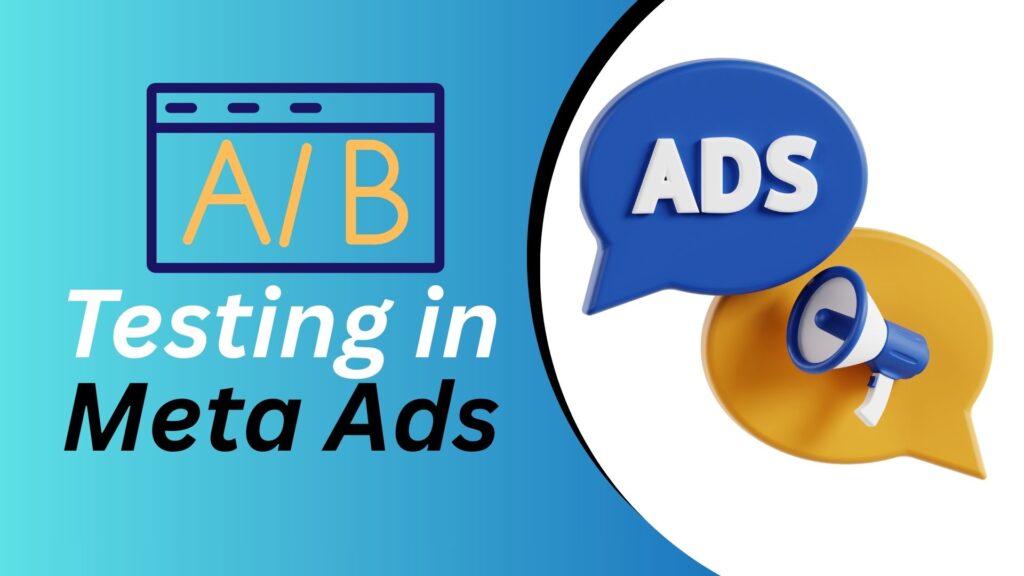
Imagine Sarah, the owner of a small e-commerce store selling eco-friendly skincare products. Excited to grow her business, she invested $5,000 into a Meta Ads campaign. She had beautiful visuals, catchy headlines, and a clear call-to-action. But after two weeks, the results were disappointing. Her ads were getting clicks—but very few purchases. She was frustrated, confused, and felt like her ad spend was going down the drain.
What Sarah didn’t realize was that her campaign could have been optimized with A/B testing. By testing different creatives, audience segments, and ad formats, she could have identified exactly what resonated with her customers—saving money and boosting her sales.
If you’ve ever run Meta Ads and felt unsure why your campaigns weren’t performing, this post is for you. Here, we’ll explore why A/B testing is a game-changer, how it works, and actionable tips to make your campaigns more effective.
1. What is A/B Testing in Meta Ads?
At its core, A/B testing—also called split testing—is the process of comparing two or more versions of an ad to see which performs better. It’s like running a mini experiment with your ads before committing your full budget.
On Meta platforms, including Facebook and Instagram, A/B testing can be applied to almost every element of your ad campaign. This includes:
- Ad Creative – Testing different images, videos, or carousels.
- Headlines – Which headline grabs attention more effectively?
- Ad Copy & CTAs – Does “Shop Now” perform better than “Learn More”?
- Audience – Different demographics, interests, or lookalike audiences.
- Placements – Feed, stories, reels, or the audience network.
By isolating one variable at a time, A/B testing helps you identify exactly what makes your audience engage, click, or convert.
2. Why A/B Testing Matters
Many marketers make the mistake of “set it and forget it.” But the truth is, even the best creatives won’t perform if they’re shown to the wrong audience or in the wrong format. A/B testing solves this problem by:
Reducing Wasted Ad Spend
Instead of pouring money into a campaign blindly, you can test small variations and scale the ones that work. This ensures every dollar is spent efficiently.
Identifying Top-Performing Creatives Quickly
You may have several ideas for your ad images or videos. A/B testing lets you know which ones actually connect with your audience.
Improving ROI and Campaign Efficiency
Over time, testing helps you consistently run campaigns that convert, increasing your return on ad spend (ROAS).
Learning Audience Preferences and Behavior
Testing provides insights beyond just clicks and sales. You learn what messaging, visuals, and formats your audience prefers—which can inform all your marketing strategies.
3. Key Elements You Can Test in Meta Ads
Here’s a breakdown of the most important variables to test:
Ad Creative
Your visual is the first thing users notice. Test:
- Single images vs. videos
- Short clips vs. longer storytelling videos
- Carousel ads highlighting multiple products
- Color schemes or design elements
Ad Copy
The words you use can make or break your campaign. Test:
- Headlines: “Limited Time Offer” vs. “Eco-Friendly Skincare You’ll Love”
- Primary text length: short punchy lines vs. detailed descriptions
- Call-to-action buttons: “Shop Now,” “Learn More,” or “Get Yours Today”
Audience Targeting
Finding the right audience is crucial. Test:
- Demographics: age, gender, location
- Interests: beauty enthusiasts, eco-conscious shoppers, skincare lovers
- Lookalike vs. custom audiences
- Layered targeting vs. broad targeting
Placements
Where your ad appears can affect performance. Test:
- Feed vs. Stories
- Reels vs. In-stream videos
- Audience network
- Instagram Explore
Ad Formats
Meta offers several ad formats. Testing helps you find the best fit for your goals:
- Single image ads
- Carousel ads
- Collection ads
- Video ads
4. How to Run A/B Tests Effectively
Running tests without a plan can lead to misleading results. Here’s how to do it right:
Test One Variable at a Time
If you change multiple things at once, you won’t know which variable caused the results.
Define Clear Goals
Decide whether you’re optimizing for clicks, conversions, leads, or engagement.
Ensure Statistically Significant Results
Make sure your test reaches enough impressions or conversions to give reliable results.
Set Test Duration
Run tests for at least 3–7 days. Longer campaigns can help average out daily fluctuations in performance.
Monitor Results and Iterate
Testing is ongoing. Once a winner emerges, implement it and start a new test for continuous improvement.
5. Common Mistakes to Avoid
Even experienced marketers fall into these traps:
- Testing Too Many Variables at Once : Don’t try to test your creative, headline, audience, and placement all at the same time. It leads to unclear results.
- Running Tests Too Short or Without Sufficient Budget : If your test doesn’t reach enough impressions, the data won’t be reliable.
- Ignoring Seasonality or Timing Factor : Your audience might behave differently during holidays or weekends—consider timing when interpreting results.
- Making Decisions Based on Incomplete Data : Wait until results are statistically significant before deciding the winner.
6. Real-World Examples
Case Study 1: Creative Swap
A fitness brand tested two ad creatives for a new supplement: a product-focused image vs. a lifestyle video. After two weeks, the lifestyle video outperformed the image by 50% higher click-through rate. By swapping the underperforming image, the brand improved overall conversions significantly.
Case Study 2: Audience Testing
An online course provider ran the same ad to two different audiences: one based on interest targeting, the other a lookalike audience of past customers. The lookalike audience drove 3x more leads, helping the company allocate budget more effectively.
Case Study 3: Placement Testing
A fashion retailer tested ads in both Instagram Stories and the Feed. Although both placements received clicks, Stories led to twice the purchases. By scaling this placement, the retailer reduced their cost per acquisition by 30%.
7. Tools & Tips for Meta A/B Testing
Meta Ads Manager’s Built-in Tool
Meta Ads Manager has a split testing feature that automatically handles variables and reports results.
Third-Party Analytics Tools
Tools like Hootsuite Ads, AdEspresso, and Revealbot provide deeper insights and automation.
Tips for Scaling Winners
- Increase budget gradually on winning ads.
- Replicate successful audiences across campaigns.
- Apply winning ad creatives to new product launches.
Conclusion
A/B testing is not just a nice-to-have—it’s essential for maximizing ROI in Meta Ads. By testing creatives, audiences, placements, and formats, marketers can make data-driven decisions, reduce wasted spend, and continuously improve performance.
Remember Sarah from the beginning? Once she implemented A/B testing, she quickly discovered which visuals, headlines, and audience segments converted best. Within a month, her ad spend became far more effective, and her sales soared.
The takeaway is simple: don’t guess—test. Start your first A/B test today, measure your results carefully, and iterate. Over time, A/B testing can transform your Meta Ads campaigns from hit-or-miss into a reliable revenue machine.
